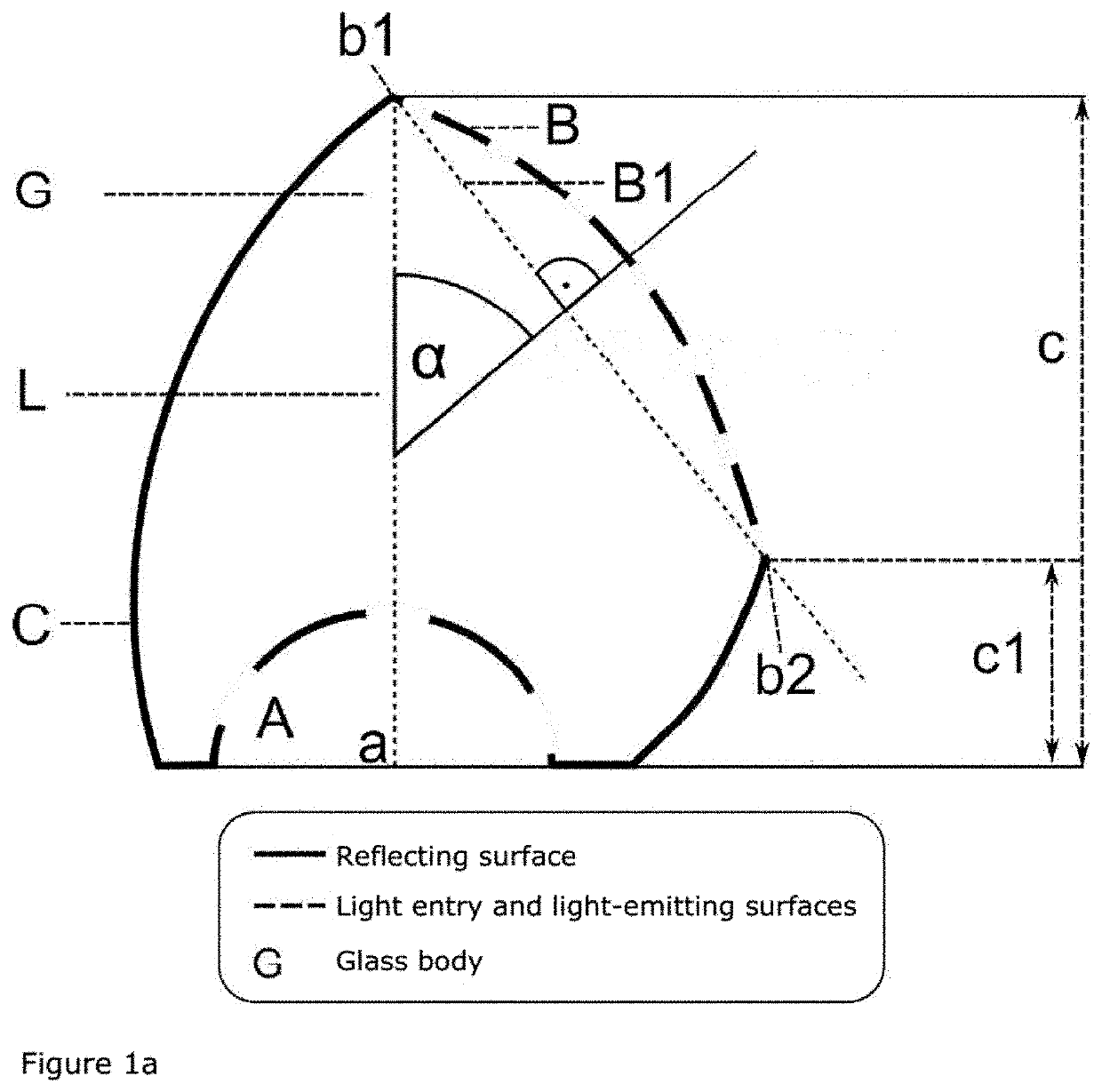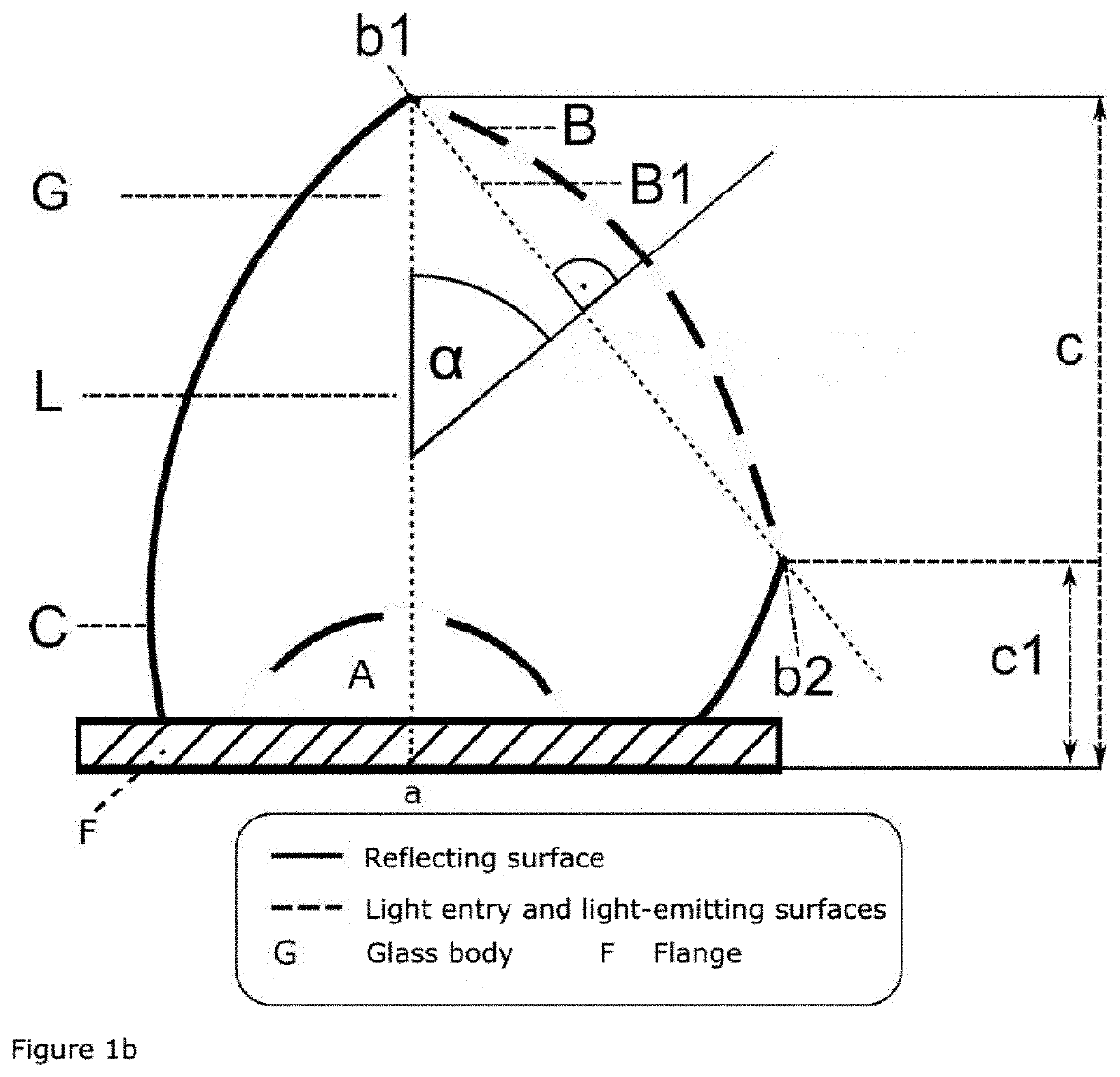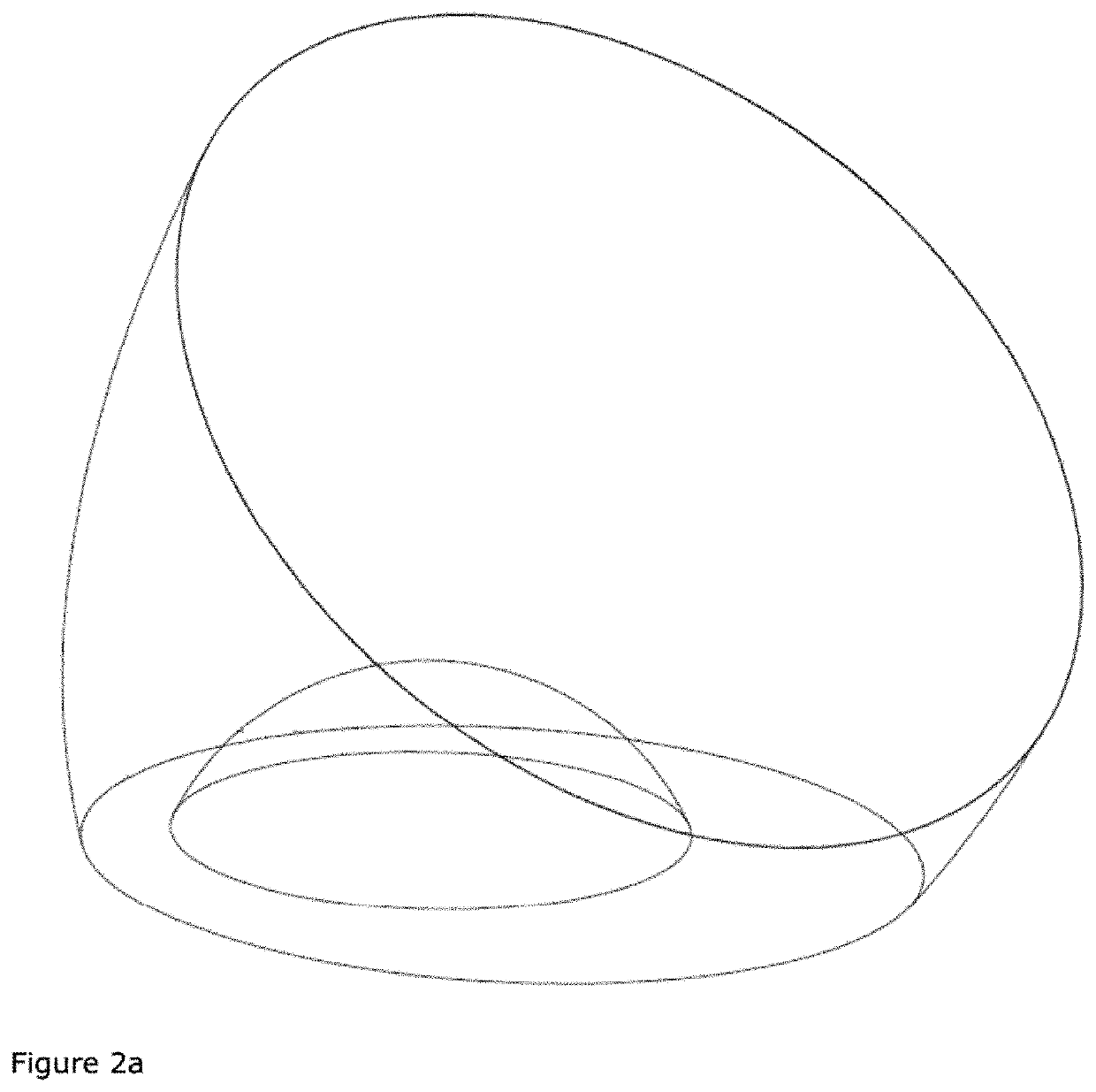Optical Lens for Illumination Purposes
- Summary
- Abstract
- Description
- Claims
- Application Information
AI Technical Summary
Benefits of technology
Problems solved by technology
Method used
Image
Examples
example 1
Comparative Examples C1 to C3
[0094]In order to further work out the differences of the novel optical system, light-technological simulations of three classical lenses and the novel lens system were performed. The simulation set-up is identical for all lens systems and is structured as follows:
[0095]1. Placing the LED into the origin of coordinates.
[0096]2. Setting the lens CAD geometry.
[0097]3. Adjusting the reference coordinates of the LED lens system.
[0098]4. Acquiring the light intensity distribution in polar coordinates.
[0099]5. Placing a rectangular area detector at a constant distance and with a constant size to calculate the luminous density distribution.
[0100]FIG. 3 shows the results of the light-technological simulation of the different optical systems. Lens system 1 (FIG. 3a) and lens system 1 with a cover (FIG. 3b) are existing lens systems that are employed in traffic. The lens system 2 (FIG. 3c) represents a simulation concept of a pure lens optical system, which narrow...
PUM
 Login to View More
Login to View More Abstract
Description
Claims
Application Information
 Login to View More
Login to View More - R&D
- Intellectual Property
- Life Sciences
- Materials
- Tech Scout
- Unparalleled Data Quality
- Higher Quality Content
- 60% Fewer Hallucinations
Browse by: Latest US Patents, China's latest patents, Technical Efficacy Thesaurus, Application Domain, Technology Topic, Popular Technical Reports.
© 2025 PatSnap. All rights reserved.Legal|Privacy policy|Modern Slavery Act Transparency Statement|Sitemap|About US| Contact US: help@patsnap.com



